#virtual science lab
Explore tagged Tumblr posts
Text
Virtual Science Lab: The New Way to Explore Chemistry Safely

Traditional chemistry classes often bring to mind glass beakers, lab coats, and sometimes, the distinct smell of chemicals in the air. But with the rise of technology, the classroom is transforming. A virtual science lab is now changing how students and educators approach chemistry, offering an innovative, safe, and interactive platform to conduct experiments without ever lighting a Bunsen burner.
Using a science lab online allows students to explore complex chemical reactions and laboratory procedures from any location. Whether at home or in a classroom without the usual lab equipment, learners can still participate in high-quality experiments that mirror real-life scenarios.
Safety, Accessibility, and Engagement
Chemistry often involves handling reactive substances, which requires supervision and proper lab conditions. A virtual science lab removes much of that risk. By simulating real experiments digitally, students can engage with challenging concepts and procedures without the danger of accidents or exposure to harmful chemicals. This virtual approach is particularly helpful for younger learners or institutions with limited lab facilities.
Furthermore, the science lab online model is accessible to a wide range of users. Students in remote areas, or those with physical disabilities, can now take part in practical science education that was previously difficult or even impossible. These platforms are designed to be user-friendly and interactive, promoting curiosity and confidence in learners.
Advancing Learning Through Technology
A online science lab is not just a safer alternative—it’s also a more adaptable one. Students can repeat experiments, make mistakes, and try different approaches without wasting resources or waiting for lab availability. This flexibility helps deepen understanding and allows for individualized learning paths based on each student's pace and interest.
Many platforms offer guided instructions, immediate feedback, and detailed results analysis, helping students connect theory to practice more effectively. Teachers also benefit from integrated assessment tools, making it easier to track progress and address learning gaps.
Looking Toward the Future
As educational institutions continue to integrate technology into their curriculums, the benefits of using a virtual science lab become clearer. It complements traditional learning methods and extends science education to more students than ever before. From middle school learners to advanced students preparing for university-level studies, this approach creates a more inclusive and safe environment for scientific exploration.
In summary, the shift toward science learning through digital platforms is reshaping how chemistry is taught and understood. The combination of safety, accessibility, and educational depth makes the online science lab a powerful tool in modern education.
0 notes
Text
Virtual Chemistry Experiments: All that You Need to Know

Performing experiments is crucial for learning chemistry as it allows you to see how things work. However, doing it in real labs can be challenging due to safety and cost issues. That is where virtual chemistry experiments come in. They are like computer games that let you do experiments without the problems of real labs, making it easier to learn and teach chemistry.
In this blog, we will look at why virtual chemistry experiments are important and how they have changed over time. We will also check out what makes virtual chemistry labs special, address the challenges they solve, and highlight the benefits of advanced digital chemistry simulations.
The Role of Experiments in Chemistry Education
Before we start talking about virtual chemistry experiments, let’s first see why experiments are so important in learning chemistry. Experiments are like the hands-on part of chemistry, and they help students really get what is going on. Here are some reasons why experiments matter:
Practical Learning: Experiments make chemistry real. You can touch, mix, and see things change, which helps you understand better.
Connecting Theory and Reality: They show how the concepts you learn in books actually work in the real world.
Problem-Solving: Experiments teach you how to figure things out and solve problems, a key skill in science.
Curiosity: They spark your curiosity and make you ask questions, which is how scientists discover new things.
Challenges of Traditional Chemistry Experiments:

Traditional chemistry experiments conducted in physical laboratories come with their own set of challenges that can hinder the learning process and limit access to quality education. Some of the key challenges associated with traditional chemistry experiments are
Safety Concerns: Traditional labs use chemicals that can be dangerous, so keeping students and teachers safe is a big deal. Accidents can happen, and it is not always easy to make sure everyone follows safety rules.
Limited Access: In many schools, especially those in areas with limited resources, students may not have access to the latest and best laboratory equipment. This can restrict students from conducting a wide range of experiments and hands-on learning experiences.
Geographical Barriers: Some students do not have the same chances to use good chemistry labs. Those living in remote or underserved areas may have limited opportunities for hands-on chemistry experiments.
Budget Issues: Setting up and maintaining a physical chemistry laboratory can be expensive. Schools with limited budgets may struggle to provide the necessary equipment, chemicals, and facilities for meaningful experiments.
Environmental Impact: Real labs create chemical waste, which can harm the environment. Proper disposal is hard and costly.
The Virtual Chemistry Experiments
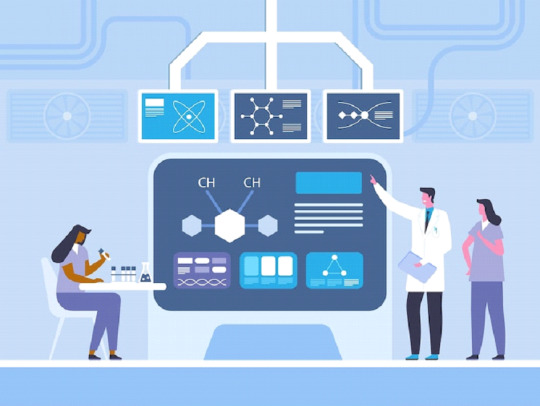
Virtual chemistry experiments are like computer games that let you do chemistry experiments without actually being in a real lab. You can play with chemicals, reactions, and lab equipment on your computer. These computer experiments look and feel just like real ones, but they are safer and more fun to learn with.
The evolution of virtual chemistry experiments is a remarkable journey that reflects the advancements in technology and education. In the 1960s, a few visionary educators and researchers recognized the potential of computers in enhancing science education. They created the simple computer simulations of chemical reactions. They were basic and did not look like modern virtual labs.
In the 1970s, simulations got more interactive, where students were able to change the parameters of the experiments, change the amount of reactants, and see their effect on the reaction in real-time. In the 1990s, online labs appeared on the internet so that students could use them from anywhere. In the 2000s, 3D technology improved, making it easier for students to understand complex chemical structures and reactions.
Features and Functionalities of Virtual Chemistry Laboratories

Virtual chemistry laboratories are comprehensive platforms designed to replicate the entire laboratory experience in a digital environment. These platforms offer a wide range of features and functionalities that make them indispensable tools in modern chemistry education.
Safety: It is a top priority in science education, and virtual chemistry experiments eliminate the risks associated with handling hazardous chemicals, glassware, and equipment. Students can explore reactions involving toxic or flammable substances without any physical danger, ensuring a safe learning environment.
Accessibility: One of the best things about virtual experiments is that they are available to everyone, no matter where they live. Even if you are in a remote place or do not have an advanced lab nearby, you can still do important chemistry experiments.
Comprehensive List of Experiments: Virtual labs have tons of experiments covering a wide range of topics, from basic to advanced chemistry experiments.
Interactivity: Interactivity is a hallmark of virtual chemistry experiments. Students can manipulate variables, adjust conditions, and observe the results in real-time.
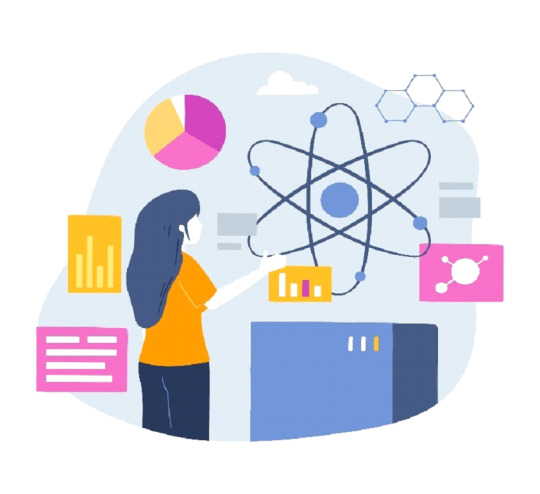
3D Molecular Modelling: One of the standout features of virtual chemistry laboratories is the ability to visualize molecules and chemical reactions in 3D. Students can rotate, zoom in, and interact with molecular structures, gaining a profound understanding of chemical bonding and geometry.
Data Collection and Analysis: In virtual labs, some tools help you collect data and analyze it. You can record your observations and measurements. After that, you can look at the data and make conclusions.
Immediate Feedback: Virtual experiments offer instant feedback on experimental outcomes, allowing students to correct errors and refine their techniques in real time.
Customization: Teachers can customize experiments to align with specific learning objectives and curriculum requirements. This flexibility ensures that virtual labs can be tailored to suit the needs of individual classes and students.
How Virtual Chemistry Experiments Work
We have explored the features and functionalities of virtual chemistry laboratories. Let us delve into the mechanics of how these experiments actually work. Understanding the inner workings of virtual experiments will provide insights into their educational value.

Simulation Engines: Virtual chemistry experiments rely on advanced simulation engines. These engines utilize mathematical models and algorithms to replicate chemical reactions and interactions. They take into account factors such as reaction kinetics, thermodynamics, and molecular forces to provide realistic results.
User Interaction: Students interact with virtual experiments through a user-friendly interface. They can select experiments from a menu, set up initial conditions, and manipulate variables using intuitive controls. This interaction is designed to mimic the actions a student would perform in a physical laboratory.
Real-time Feedback: As students conduct experiments, the simulation engine provides real-time feedback. This feedback includes visual representations of reactions, data collection, and analysis. It allows students to observe the consequences of their actions and make adjustments as needed.
Data Collection and Analysis: Virtual labs often include tools for data collection and analysis. Students can record measurements, observe trends, and perform calculations just as they would in a physical lab. This data-driven approach reinforces scientific methodology and critical thinking skills.
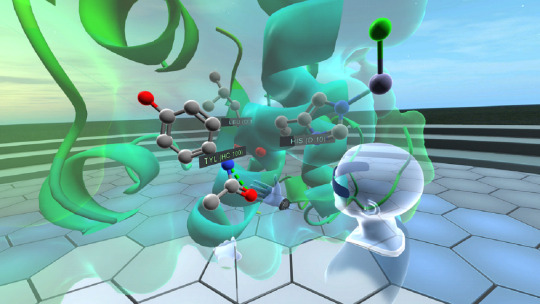
3D Visualization: One interesting thing about virtual chemistry experiments is 3D visualization. Students can explore molecular structures, rotate them, and zoom in to examine details. This immersive experience enhances their understanding of molecular geometry and chemical bonding.
Experiment Customization: Teachers can change virtual experiments to fit what they want students to learn. They can adjust things, like the weight of the reactants or the experimental conditions, to make it match what they are teaching. This way, the virtual experiments match what students are supposed to be learning.
The Future of Virtual Chemistry Experiments:
As technology continues to advance, the future of virtual chemistry experiments looks even more promising. Here are some trends and potential developments on the horizon:
Integration of Artificial Intelligence (AI): AI can play a significant role in virtual experiments by providing personalized learning experiences. These labs might adapt experiments based on individual progress, provide targeted feedback, and even suggest additional resources or experiments to enhance understanding.
Virtual Reality and Augmented Reality: The integration of VR and AR technologies could take virtual chemistry experiments to the next level. Students could wear VR headsets to feel like they are in a real lab, interacting with equipment and chemicals in a virtual environment.
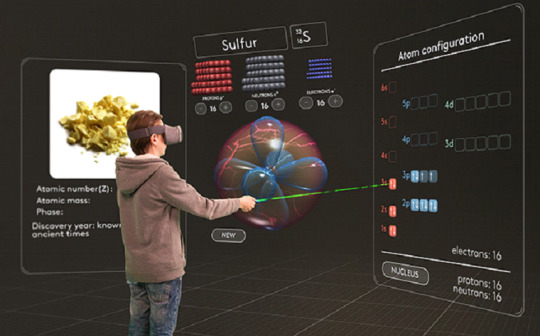
Remote Collaboration: Virtual labs have the potential to bring students and educators together, even when they are far apart. This means students can work on projects, have discussions, and share what they know, all without being in the same place. Learning to collaborate and communicate in a virtual environment can be a valuable skill for the future.
Advanced Simulations: The simulations themselves will continue to improve, becoming more realistic and accurate. This will provide students with an even better understanding of complex chemical processes.
Cloud-Based Platforms: Moving virtual labs to the cloud can enhance accessibility. Students won’t need powerful computers to run simulations, as the processing will happen on remote servers.
If you want to try virtual chemistry experiments, you can find lots of resources on the internet. SimuLab is one of the most advanced and interactive virtual labs available. It’s a great place to start your virtual chemistry journey.

Conclusion:
As we look ahead to the future of learning chemistry, it is important to see how amazing virtual experiments can be. They make learning available to everyone, help us understand things better, and get us ready for a future in science and innovation.
The laboratory of the future is no longer limited to brick and mortar; it exists in the virtual realm, ready to inspire and educate. Whether you are a student, teacher, or just curious, the virtual lab is waiting for you. It is safe, easy to use, and takes you on an exciting journey into the world of chemistry. Virtual chemistry experiments have unlocked a new era of discovery and understanding.
Writer – Ajay Shende
Scientific Content Writer – Chemistry
1 note
·
View note
Text
Virtual Physics Experiments: Learn Everything About Digital Experiments
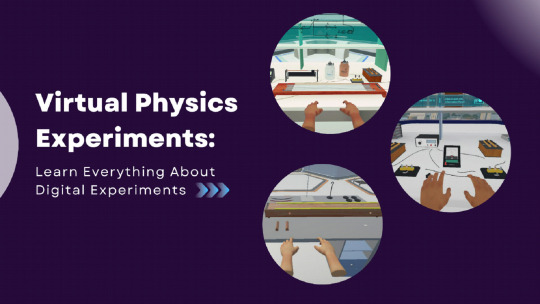
Physics is a fascinating subject that deals with nature’s basic laws. One of the best ways to learn physics is by doing experiments. Traditionally, students performed these experiments in a physical laboratory setting. This is where virtual physics experiments come in. Virtual physics experiments are computer simulations of real-world physics experiments.
In this blog, we will explore the world of virtual physics experiments. We will also delve into the benefits of using advanced digital physics simulations in the learning process.
Challenges and problems faced by students in physics laboratory
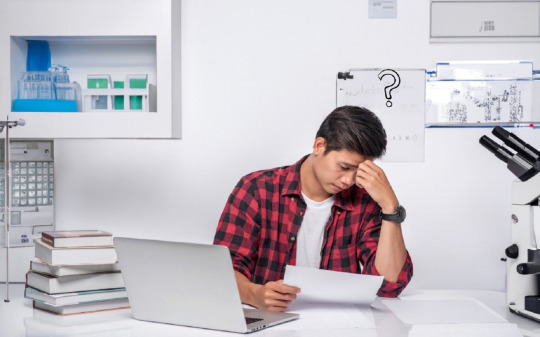
Before delving into virtual experiments, it is essential to understand the challenges that students often face in physical physics laboratories:
Limited Equipment Availability: Many schools and colleges have limited resources, resulting in inadequate equipment for conducting experiments. This scarcity often forces students to share equipment, limiting their hands-on experience.
Time Constraints: Physical labs often have strict time constraints. Students may have only a limited time to complete experiments, which can lead to rushed or incomplete observations.
Safety Concerns: Physics experiments can involve dangerous elements, such as high voltages or chemicals. Ensuring the safety of students in a physical lab is a constant concern for instructors.
Inadequate Supervision: In a crowded lab with limited instructors, it is challenging for each student to receive personalized guidance and supervision. This can hinder their understanding and ability to perform experiments correctly.
Equipment Malfunction: Mechanical and electrical equipment can malfunction, disrupting experiments and causing frustration for students.
Resource Constraints: Many schools struggle to maintain and upgrade their lab equipment due to budget constraints, leading to outdated or non-functional apparatus.
Benefits of advanced digital physics simulations

Now, let’s explore how advanced digital physics simulations address these challenges while offering numerous benefits:
Accessibility: Virtual experiments eliminate the constraints of physical laboratories, making them accessible to students regardless of their geographical location. This is especially beneficial for students in remote areas or those with limited access to laboratory facilities.
Safety: Dangerous experiments involving high voltages or hazardous materials can be simulated safely in a digital environment, reducing the risk to students and instructors.
Unlimited Resources: Virtual simulations provide an almost limitless array of resources and equipment, allowing students to perform experiments with various parameters and conditions, enhancing their understanding of underlying concepts.
Instant Feedback: In virtual experiments, students receive immediate feedback, enabling them to rectify mistakes and gain a deeper understanding of the experimental process.
Cost-Efficiency: Setting up and maintaining a physical laboratory can be expensive. Virtual experiments reduce costs associated with equipment, maintenance, and consumables.
Time Efficiency: Digital simulations save valuable class time that would otherwise be spent setting up and conducting experiments, allowing educators to cover more content.
Enhanced Visualization: Virtual experiments often come with advanced graphics and animations, making it easier for students to visualize complex physical phenomena.
Customization: Students can repeat experiments multiple times with different parameters, reinforcing their learning and experimentation skills.
How are these virtual physics experiments developed?
Ever wondered how these experiments are created? Creating digital and virtual physics experiments involves the application of various scientific principles and technologies to simulate physical phenomena and interactions in a computerized environment. Let’s know the science and development process behind digital and virtual physics experiments.
Understanding the Physics: Developers must have a deep understanding of the physics principles they want to simulate.
Mathematical Modelling: Physics simulations often begin with mathematical models that describe the behaviour of physical systems. These models use equations, such as Newton’s laws of motion or Maxwell’s equations for electromagnetism, to represent the underlying physics.
Programming Languages: Virtual physics experiments are implemented through computer programming using languages like C++, Python, or Java. These languages are chosen based on factors such as efficiency, platform compatibility, and ease of development.
Simulation Engines: Developers often use specialized simulation engines or libraries that provide tools and functions for modelling and solving physics problems efficiently. Examples include Unity for game-based simulations and libraries like OpenFOAM for fluid dynamics simulations.
Visualization
Rendering and Graphics: The visual representation of the virtual experiment is crucial. Developers use computer graphics techniques to render 2D or 3D simulations, including the use of shaders, textures, and lighting to create realistic visuals.
User Interface (UI): A user-friendly interface is designed to allow users to interact with and control the simulation. This includes features like menus, buttons, sliders, and data visualization tools.
User Input: Users interact with virtual physics experiments through input devices like a keyboard, mouse, or touchscreen. These inputs are translated into actions within the simulation, such as applying forces, changing parameters, or adjusting settings.
Real-Time Computation: Physics simulations must run in real-time, providing instantaneous feedback to users as they interact with the virtual experiment. Achieving real-time performance often requires optimizing code and using parallel computing techniques.
Accessibility and Educational Goals: Digital and virtual physics experiments are often developed with specific educational goals in mind. Developers must consider the target audience and design experiments that align with educational objectives
Integration with Hardware: In some cases, virtual physics experiments can be integrated with hardware devices like sensors, haptic feedback devices, or virtual reality (VR) headsets to enhance the user experience and provide more realistic interactions.
Experiments in the physics curriculum
Different state boards mandate a set of physics experiments for students. These experiments cover a wide range of topics, including mechanics, electricity, optics, and modern physics. There are many different virtual physics experiments available online. With virtual physics experiments, students can now access a vast repository of experiments that closely mimic real-world scenarios. Some of the most well-known are:
Simple Pendulum Experiment: This experiment allows students to study the period and frequency of a simple pendulum.
Ohm’s Law Experiment: By virtually connecting resistors, ammeters, and voltmeters, students can explore Ohm’s law and understand the relationship between voltage, current, and resistance.
Focal Length of Concave and Convex Mirror: Digital simulations allow students to adjust the object’s position and observe the corresponding image formed by the mirror, helping them understand the concepts of focal length and mirror behaviour.
Characteristics of a PN Junction Diode: Virtual experiments allow students to alter diode properties by adjusting the voltage and monitoring how it affects the flow of current, which aids in the understanding of semiconductor physics.
These are just a few examples of the many virtual physics experiments that are available. One of the most effective virtual science labs available in the market is SimuLab.
The most effective virtual experiment simulations and virtual lab – SimuLab
SimuLab is a 3D virtual scientific laboratory that enables students to study and conduct experiments – anytime, anywhere. It has the most advanced simulations of K-12 science subjects. SimuLab is an excellent tool for anyone who wants to experience real experiments or learn more about science. It is a cutting-edge learning tool created by IITians using modern technologies such as AI, AR, and VR.
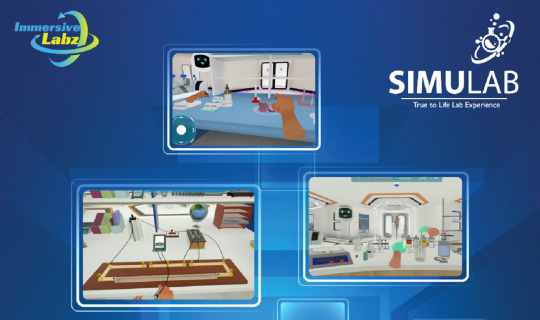
Overview:
Easily access the science laboratory with convenience and without any difficulties.
Acquire a simplified and engaging method to learn scientific experiments.
Receive comprehensive, step-by-step instructions for conducting experiments.
Foster the development of scientific reasoning and a strong conceptual grasp of the subject.
Practice experiments an unlimited number of times.
Retain a deep understanding of scientific concepts over an extended period.
Achieve improved academic performance and excel in competitive exams such as IIT/NEET.
Access the platform effortlessly across various devices, including smartphone, desktop, and tablet.
About virtual simulations:
Abundant resources are available to facilitate a comprehensive understanding of each science experiment.
Aim: Establishes a clear focus on the experiment’s purpose and objectives.
Objective: Outlines what will be taught, how it will be learned, and what outcomes can be expected from the experiment.
Safety Precautions: Provides safety guidelines specific to each experiment to ensure a secure laboratory environment.
Theory: Offers simplified theoretical explanations to aid learners in grasping fundamental concepts.
Story: Incorporates real-life scenarios related to the subject to enhance engagement in the learning process.
Simulation: Grants access to an advanced virtual platform for conducting science experiments.
Quizzes: Includes multiple quiz questions to facilitate better preparation for competitive exams like IIT/NEET.
Analytics: Allows users to assess their progress and monitor overall progress using a performance dashboard.
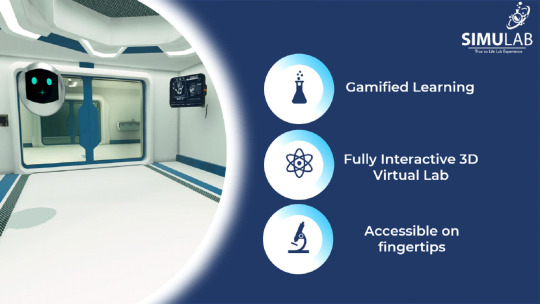
Final words
Virtual physics experiments have transformed the way students learn and understand physics concepts. For students, these simulations offer a comprehensive and efficient way to conduct experiments while addressing the challenges faced in physical laboratories. Embracing virtual physics experiments not only keeps students engaged but also prepares them for a world where technology plays an ever-increasing role in scientific research and experimentation.
Writer – Girish Hedau
Scientific Content Writer – Physics
1 note
·
View note
Text
someone should make superliminal into a vr game just to see what happens when the unstoppable force that is retinal disparity meets the immovable object that is interposition
#superliminal#vr games#virtual reality#binocular depth cue of retinal disparity#monocular depth cue of interposition#i had to learn both these terms for an exam and i will not hesitate to use them#unethical experiments#psychology#experimentation#i want to use superliminal players as little lab mice#y’all don’t mind do you?#for science#phillip zimbardo
2 notes
·
View notes
Text
I periodically have to assure my coworkers that it's not their fault I flinch every time they open the gas lab door. It's just a thing that happens. No, I don't know why either.
#hyperfocus? anxiety disorder? god only knows and he ain't tellin'#sensory processing issues?#it's literally just this one door. not the wet lab door which is virtually identical.#i guess i can see people coming better in the wet lab?#hylian rambles#hylian does science
5 notes
·
View notes
Photo

Communicating across time TeleAbsence, a project from the MIT Media Lab, probes and imitates the way humans process feelings of belonging, love, and loss. https://news.mit.edu/2023/communicating-across-time-teleabsence-0811
#Arts#Augmented and virtual reality#Communications#Students#Technology and society#Graduate#postdoctoral#Media Lab#Visual arts#Art#Culture and Technology#Center for Art#Science and Technology#School of Architecture and Planning#Ken Shulman | Arts at MIT#MIT News
2 notes
·
View notes
Text
🧪 No Microscope? No Bunsen Burner? No Problem.
Science doesn’t stop just because you’re not in a physical lab. With virtual science lab tools, students can explore chemistry reactions, physics simulations, and biology dissections — all from home. 💻✨
Whether you’re in a remote classroom, homeschooling, or just love experimenting, this guide breaks down the best virtual science platforms for hands-on learning in 2025.
🧬 Start exploring here: 🔗 Virtual Science Labs Made Easy: The Best Tools for Learning at Home
Learn. Experiment. Discover — no goggles required. 👩🔬🌐
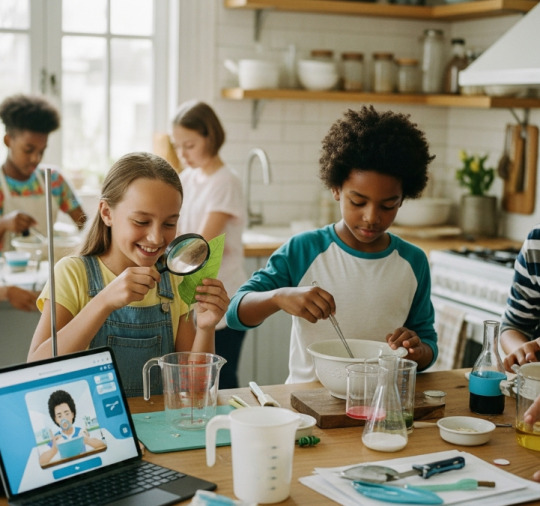
#Virtual science labs#Online science learning#STEM at home#Science simulations#Homeschool science tools#Interactive lab learning#Remote learning science#EdTech STEM#Digital science experiments#Learn science online
0 notes
Text

Explore the Essential Tools for Microbiology Labs!
Ever wondered what makes microbiology research possible? Dive into the basic equipment used to study microorganisms safely and effectively! From incubators to microscopes, these tools are crucial for breakthroughs in medicine, environmental science, and more.
Check out our latest blog on microbiology lab essentials and how PraxiLabs’ virtual simulations are transforming the way students engage with these tools👇
0 notes
Text
okay you know those virtual science labs they made you do in high school?
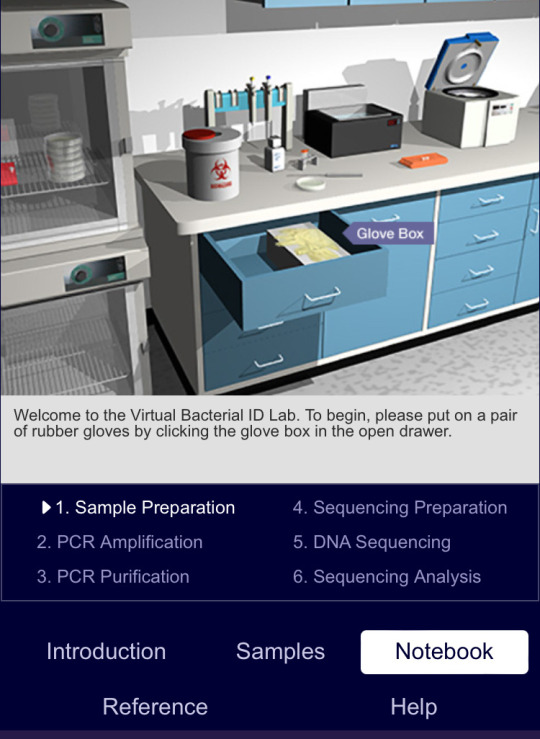
i bet they’d have mad science versions at evil high school
27K notes
·
View notes
Text
How to Create Stunning Graphics with Adobe Photoshop
Introduction
Adobe Photoshop is the preferred software for graphic designers, photographers, and digital artists worldwide. Its powerful tools and versatile features lead to the foundation of an essential application that one needs to create the best kind of graphics. Mastering Photoshop can improve your creative-level projects, whether you are a beginner or an experienced user. In this tutorial, we will walk you through the basics and advanced techniques so you can create stunning graphics with the help of Adobe Photoshop. Read to continue
#Technology#Science#business tech#Adobe cloud#Trends#Nvidia Drive#Analysis#Tech news#Science updates#Digital advancements#Tech trends#Science breakthroughs#Data analysis#Artificial intelligence#Machine learning#Ms office 365#Quantum computing#virtual lab#fashion institute of technology#solid state battery#elon musk internet#Cybersecurity#Internet of Things (IoT)#Big data#technology applications
0 notes
Text
Why Students Love Learning Through a Virtual Lab for Schools

Students are naturally curious, and science offers them a gateway to explore how the world works. However, traditional labs often come with limitations - safety concerns, limited resources, and time constraints. This is where a Virtual Lab for Schools becomes a game-changer. It brings experiments to life on-screen, providing a safe, engaging, and cost-effective way for students to explore scientific concepts.
By incorporating realistic simulations and hands-on virtual experiments, this tool enhances student learning and curiosity. Teachers can guide students through complex processes without the need for physical materials, making it especially useful for schools with limited lab infrastructure. The use of a Virtual Lab for Schools not only enriches the learning environment but also ensures that students don’t miss out on vital experimental experiences.
Technology Meets Science Education
With the integration of digital tools into the classroom, the app for science students has become a popular method to reinforce theoretical knowledge through practice. These apps allow learners to conduct experiments repeatedly, learn at their own pace, and grasp abstract scientific ideas more clearly.
One of the major advantages of using an app for science students is accessibility. Whether at home or in school, students can conduct simulated experiments with just a few clicks. This flexibility allows for a more personalized learning experience, catering to both advanced learners and those who need more time to understand the material.
Benefits Beyond the Classroom
Virtual labs provide more than just convenience - they also foster a deeper understanding of scientific methodology. Students can make mistakes without fear, try out multiple solutions, and build critical thinking skills in a controlled environment. These simulations also align with current science education goals by preparing students for future scientific careers.
Moreover, virtual labs are designed to be inclusive, providing equal opportunities to all students regardless of geographic or economic limitations. Schools without access to traditional lab setups can still offer a high-quality science education.
A Glimpse Into the Future of Education
As educational institutions continue to adapt to digital transformation, tools like virtual labs and interactive science apps are playing an increasingly important role. They not only supplement traditional teaching methods but often surpass them in terms of engagement and effectiveness.
Students today are digital natives, and integrating technology into learning meets them where they are. By offering a visually rich, interactive, and exploratory approach to science, virtual labs ensure that learning is not just effective, but enjoyable.
In summary, tools like a Virtual Lab for Schools and the app for science students are revolutionizing how science is taught and learned. They are shaping a future where education is immersive, accessible, and driven by curiosity.
0 notes
Text
Virtual Physics Experiments: Learn Everything About Digital Experiments
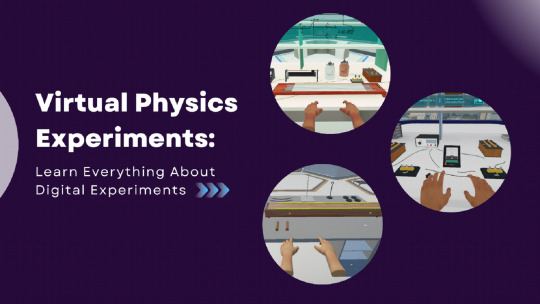
Physics is a fascinating subject that deals with nature’s basic laws. One of the best ways to learn physics is by doing experiments. Traditionally, students performed these experiments in a physical laboratory setting. This is where virtual physics experiments come in. Virtual physics experiments are computer simulations of real-world physics experiments.
In this blog, we will explore the world of virtual physics experiments. We will also delve into the benefits of using advanced digital physics simulations in the learning process.
Challenges and problems faced by students in physics laboratory
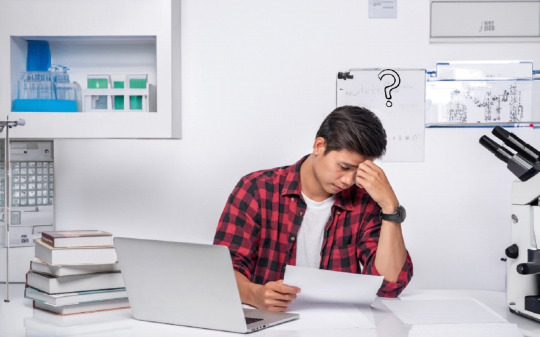
Before delving into virtual experiments, it is essential to understand the challenges that students often face in physical physics laboratories:
Limited Equipment Availability: Many schools and colleges have limited resources, resulting in inadequate equipment for conducting experiments. This scarcity often forces students to share equipment, limiting their hands-on experience.
Time Constraints: Physical labs often have strict time constraints. Students may have only a limited time to complete experiments, which can lead to rushed or incomplete observations.
Safety Concerns: Physics experiments can involve dangerous elements, such as high voltages or chemicals. Ensuring the safety of students in a physical lab is a constant concern for instructors.
Inadequate Supervision: In a crowded lab with limited instructors, it is challenging for each student to receive personalized guidance and supervision. This can hinder their understanding and ability to perform experiments correctly.
Equipment Malfunction: Mechanical and electrical equipment can malfunction, disrupting experiments and causing frustration for students.
Resource Constraints: Many schools struggle to maintain and upgrade their lab equipment due to budget constraints, leading to outdated or non-functional apparatus.
Benefits of advanced digital physics simulations
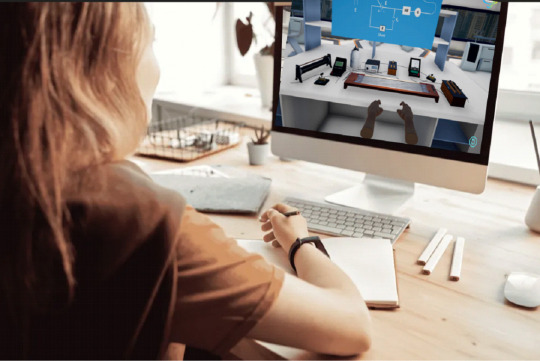
Now, let’s explore how advanced digital physics simulations address these challenges while offering numerous benefits:
Accessibility: Virtual experiments eliminate the constraints of physical laboratories, making them accessible to students regardless of their geographical location. This is especially beneficial for students in remote areas or those with limited access to laboratory facilities.
Safety: Dangerous experiments involving high voltages or hazardous materials can be simulated safely in a digital environment, reducing the risk to students and instructors.
Unlimited Resources: Virtual simulations provide an almost limitless array of resources and equipment, allowing students to perform experiments with various parameters and conditions, enhancing their understanding of underlying concepts.
Instant Feedback: In virtual experiments, students receive immediate feedback, enabling them to rectify mistakes and gain a deeper understanding of the experimental process.
Cost-Efficiency: Setting up and maintaining a physical laboratory can be expensive. Virtual experiments reduce costs associated with equipment, maintenance, and consumables.
Time Efficiency: Digital simulations save valuable class time that would otherwise be spent setting up and conducting experiments, allowing educators to cover more content.
Enhanced Visualization: Virtual experiments often come with advanced graphics and animations, making it easier for students to visualize complex physical phenomena.
Customization: Students can repeat experiments multiple times with different parameters, reinforcing their learning and experimentation skills.
How are these virtual physics experiments developed?
Ever wondered how these experiments are created? Creating digital and virtual physics experiments involves the application of various scientific principles and technologies to simulate physical phenomena and interactions in a computerized environment. Let’s know the science and development process behind digital and virtual physics experiments.
Understanding the Physics: Developers must have a deep understanding of the physics principles they want to simulate.
Mathematical Modelling: Physics simulations often begin with mathematical models that describe the behaviour of physical systems. These models use equations, such as Newton’s laws of motion or Maxwell’s equations for electromagnetism, to represent the underlying physics.
Programming Languages: Virtual physics experiments are implemented through computer programming using languages like C++, Python, or Java. These languages are chosen based on factors such as efficiency, platform compatibility, and ease of development.
Simulation Engines: Developers often use specialized simulation engines or libraries that provide tools and functions for modelling and solving physics problems efficiently. Examples include Unity for game-based simulations and libraries like OpenFOAM for fluid dynamics simulations.
Visualization
Rendering and Graphics: The visual representation of the virtual experiment is crucial. Developers use computer graphics techniques to render 2D or 3D simulations, including the use of shaders, textures, and lighting to create realistic visuals.
User Interface (UI): A user-friendly interface is designed to allow users to interact with and control the simulation. This includes features like menus, buttons, sliders, and data visualization tools.
User Input: Users interact with virtual physics experiments through input devices like a keyboard, mouse, or touchscreen. These inputs are translated into actions within the simulation, such as applying forces, changing parameters, or adjusting settings.
Real-Time Computation: Physics simulations must run in real-time, providing instantaneous feedback to users as they interact with the virtual experiment. Achieving real-time performance often requires optimizing code and using parallel computing techniques.
Accessibility and Educational Goals: Digital and virtual physics experiments are often developed with specific educational goals in mind. Developers must consider the target audience and design experiments that align with educational objectives
Integration with Hardware: In some cases, virtual physics experiments can be integrated with hardware devices like sensors, haptic feedback devices, or virtual reality (VR) headsets to enhance the user experience and provide more realistic interactions.
Experiments in the physics curriculum
Different state boards mandate a set of physics experiments for students. These experiments cover a wide range of topics, including mechanics, electricity, optics, and modern physics. There are many different virtual physics experiments available online. With virtual physics experiments, students can now access a vast repository of experiments that closely mimic real-world scenarios. Some of the most well-known are:
Simple Pendulum Experiment: This experiment allows students to study the period and frequency of a simple pendulum.
Ohm’s Law Experiment: By virtually connecting resistors, ammeters, and voltmeters, students can explore Ohm’s law and understand the relationship between voltage, current, and resistance.
Focal Length of Concave and Convex Mirror: Digital simulations allow students to adjust the object’s position and observe the corresponding image formed by the mirror, helping them understand the concepts of focal length and mirror behaviour.
Characteristics of a PN Junction Diode: Virtual experiments allow students to alter diode properties by adjusting the voltage and monitoring how it affects the flow of current, which aids in the understanding of semiconductor physics.
These are just a few examples of the many virtual physics experiments that are available. One of the most effective virtual science labs available in the market is SimuLab.
The most effective virtual experiment simulations and virtual lab – SimuLab
SimuLab is a 3D virtual scientific laboratory that enables students to study and conduct experiments – anytime, anywhere. It has the most advanced simulations of K-12 science subjects. SimuLab is an excellent tool for anyone who wants to experience real experiments or learn more about science. It is a cutting-edge learning tool created by IITians using modern technologies such as AI, AR, and VR.

Overview:
Easily access the science laboratory with convenience and without any difficulties.
Acquire a simplified and engaging method to learn scientific experiments.
Receive comprehensive, step-by-step instructions for conducting experiments.
Foster the development of scientific reasoning and a strong conceptual grasp of the subject.
Practice experiments an unlimited number of times.
Retain a deep understanding of scientific concepts over an extended period.
Achieve improved academic performance and excel in competitive exams such as IIT/NEET.
Access the platform effortlessly across various devices, including smartphone, desktop, and tablet.
About virtual simulations:
Abundant resources are available to facilitate a comprehensive understanding of each science experiment.
Aim: Establishes a clear focus on the experiment’s purpose and objectives.
Objective: Outlines what will be taught, how it will be learned, and what outcomes can be expected from the experiment.
Safety Precautions: Provides safety guidelines specific to each experiment to ensure a secure laboratory environment.
Theory: Offers simplified theoretical explanations to aid learners in grasping fundamental concepts.
Story: Incorporates real-life scenarios related to the subject to enhance engagement in the learning process.
Simulation: Grants access to an advanced virtual platform for conducting science experiments.
Quizzes: Includes multiple quiz questions to facilitate better preparation for competitive exams like IIT/NEET.
Analytics: Allows users to assess their progress and monitor overall progress using a performance dashboard.
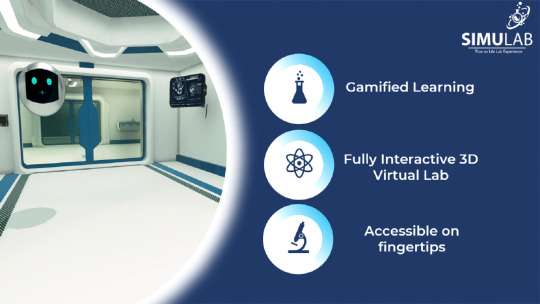
Final words
Virtual physics experiments have transformed the way students learn and understand physics concepts. For students, these simulations offer a comprehensive and efficient way to conduct experiments while addressing the challenges faced in physical laboratories. Embracing virtual physics experiments not only keeps students engaged but also prepares them for a world where technology plays an ever-increasing role in scientific research and experimentation.
Writer – Girish Hedau
Scientific Content Writer – Physics
0 notes
Text
"Uncover the Wonders of Human Biology | The Magical Microscope Exploring the Human Body"
#ScienceEducation #STEMEducation #ChildrensBooks #BiologyAdventure #MedicalScience #CuriousMinds #YoungExplorers #LearningIsFun #EducationalVideos #MicroscopicWorld #ScienceEducation #STEMEducation #ChildrensBooks #BiologyAdventure #MedicalScience #CuriousMinds #YoungExplorers #LearningIsFun #EducationalVideos #MicroscopicWorld #PopularScience #InteractiveLearning #HandsOnActivities #VirtualLabs…

View On WordPress
#aum sum#aumsum time#Biology adventure#Brain teasers#Children&039;s books#Creative learning#Critical thinking#Curious minds#DIY projects#Educational apps#Educational toys#educational videos#Fun learning games#Hands-on activities#Homeschooling resources#human#Interactive learning#Learning is fun#Medical science#Microscopic world#Online classes#Popular science#Science education#Science experiments#STEM education#Virtual labs#Young explorers
0 notes
Text
Exploring the Future: Virtual Science Labs Revolutionizing STEM Education
Embark on a groundbreaking educational journey with 'Exploring the Future.' Immerse yourself in the virtual realm of science labs, where cutting-edge technology transforms STEM education. Experience hands-on experiments, foster curiosity, and revolutionize learning. This innovative approach heralds a new era in scientific exploration, paving the way for tomorrow's STEM leaders.
To read more visit - https://www.iwises.com/exploring-the-future-virtual-science-labs-revolutionizing-stem-education/

0 notes
Text
#Science education#higher education#virtual reality#VR education#education technology#edtech#ixrlabs#VR labs
0 notes
Note
Hello fellow Jayce defender.
First off, virtual kisses on both your cheeks for your Arcane analysis. They're refreshing to read, and insightful as well.
Something that's always bothered me about the way fans interact with Jayce is assuming that he's always the one making the mistakes in any of his relationships. It's almost funny in a way how they strip other characters of their autonomy and arcs just so they can point out how Jayce is failing his partners.
With Mel and Viktor especially, there's this narrative that Jayce simultaneously ignores both of their needs while also prioritising one over the other. Either he neglects Viktor to go and swoon over Mel, or he abandons his relationship with Mel to go play science with Viktor, or he neglects both to go do his own things while they suffer through their own plots.
And it's fascinating how incredibly mistaken these people are, and also how they reduce his character to only being important when he's in a relationship.
I'm here like, "hey, do you wanna discuss the reason for how Jayce seemingly knows how to navigate the ways of high class society very easily is probably because he's had to rely on sponsorships and donations for most of his youth to find his research because his house is too poor to be able afford it?"
Or "It's canonical that Jayce only ever had one friend in his youth before Viktor, and that was the daughter of his main sponsor, do you think it's interesting that this indicates he probably had difficulty making or maintaining friendships and that this is possibly a symptom of the Academy mainly housing elite and rich students so they couldn't relate to his struggles and he couldn't relate to theirs?"
But no, people just want to hate on him for not being the picture perfect boytoy in a relationship.
And I mean, it's not like it's just reduced to Jayce either. So many other characters have had similar treatments where they're reduced to either their most basic qualities or mischaracterised entirely. And I'm really not trying to be the fandom police or whatever - everyone interprets differently - I just find it frustrating is all.
Anyways, you're cool.
YES I never have time to talk about this bc people don't give a fuck but in Jayce's journals we even see him stewing with envy and petty rage at this star-rising student on the academy that he sees as the example of a perfect prodigy (in opposition to how much Jayce fucks things up...)

It also strongly suggests he's on a scholarship, which ties into his suicide attempt.


Jayce is keeping his experiments a secret from everyone to avoid the blowback and isolating himself further and further when they don't work. Jayce is flawed! He's proud of his dream pitch to the point of hilarity. Jayce doesn't like socializing, he does it out of obligation! Even when he's being raised to a councilor position in s1 he's PANICKING. He doesn't want the fucking job, he doesn't like the parties nor the people, his truest honest self is that moment in season 2 where he declares the lab was always his home, and so was Viktor.
But even then he subsumes his own wants spends most of s1 trying to attend to the needs of other people. He routinely asks Viktor if he's alright, if he wants to come up to do the presentation, if he's sure those experiments are safe, etc. He tries to make Heimerdinger proud despite his constant rejections of their projects, and only turns on him when he threatens viktor's wellbeing. The reason why he doesn't announce anything on progress day is that he Was listening to Heimers so-called wisdom and it only bit him in the ass. Jayce gets himself in trouble with the council by being too naive and assuming his new post will allow him to crackdown on Piltovan corruption aided by the Hexgates. Majority of the complaints wrt relationships I see people making of him are just wildly exaggerated. "He was neglecting viktor" bro he talks about viktor in nearly every scene he has with mel 😭 viktor is the one who isolates himself and randomly disappears at times bc he's a grown man with his own boundaries.
Jayce's entire life is defined by the transactional nature of his existence, his work, the patronage receives - all depending on how much he can play the showpony role without fucking it up. It's not a comfortable position. Jayce is stressing out the whole damn show because if one person isn't pissed at him, someone else will be, and it always comes down to revokable money, investments, social standing. if he really was as uncaring and well-off as some claim he wouldn't give a shit. He could just coast along life, but that's not what he's doing ever. He only 'frees' himself in season 2 by abandoning his life's dream and the rotten reality that existed around it. Which is kind of bleak, but at least its over.
#something about the undeniable suicidality undertones#jayce talis#jayce arcane#jayvik#hexposts#viktor league of legends#jayce league of legends#league of legends#vikjayce#arcane#jayce lol#viktor lol#meta tag#viktor arcane#mel medarda#heimerdinger
946 notes
·
View notes